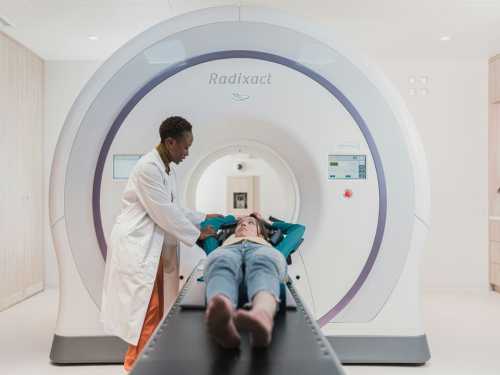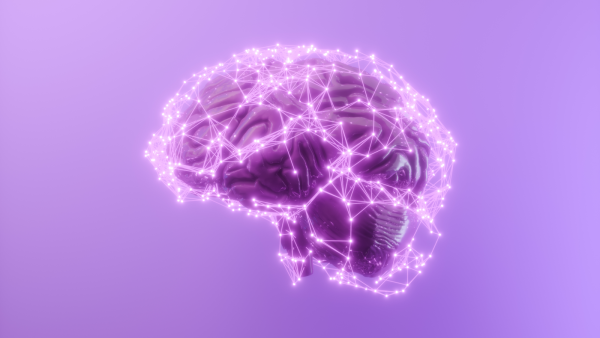
MRI is rightly considered one of the safest and most informative diagnostic methods. Unlike CT or X-ray, there is no radiation exposure, and it would seem that what could go wrong? But as soon as it comes to the examination itself, many questions and concerns arise.
Let's figure out when magnetic resonance imaging is completely safe, when it requires caution, and in which cases it is better to refuse it altogether.
First trimester of pregnancy
Although the harmful effects of MRI on the embryo have not been studied and proven, it is during this period that the laying and formation of the main organs and systems of the embryo occurs. Therefore, any impact on the mother's body is not desirable. However, in exceptional cases, when there is a threat to the mother's life, MRI is still performed.
It is interesting that pregnant women begin to give up their seats in transport and be treated with care and concern in the later stages, when they see their big belly. In fact, it is no less, if not more important, to show attention and care in the first three months, since the laying of organs and the formation of this little person takes place precisely in the first months, and then it only grows.
Pacemaker or artificial pacemaker
Our heart beats constantly, automatically and in a certain rhythm, regardless of whether we are asleep or awake. If there is a rhythm disturbance that cannot be cured with medication, an artificial pacemaker is installed, this is a small electronic device that makes the heart beat correctly, but if it gets into the magnetic field of the tomograph, it can FAIL, which in turn can lead to cardiac arrest.
But there is an exception here too. Some modern pacemakers have an MRI-compatible mode.
The presence of other metal devices in the body
This includes insulin pumps, chemotherapy pumps, and permanent hearing aids. There is no risk to a person's life with these devices in an MRI, but the devices themselves will most likely not function normally after such exposure.
The presence of any metallic elements in the body
Perhaps the most popular question you may hear at the clinic is: “I have metal dental implants, can I have an MRI?” — Yes, you can!
Everything related to any oral implants, braces, retainers, etc., can be done with MRI.
But there is a nuance. If you need an MRI of the head or sinuses, then all these glands in the mouth will most likely create some obstacles for the MRI, called artifacts, which in general can reduce the informativeness of the study, but is not a contraindication, but if you need an MRI of the abdomen or lower back, and so on, then they have no effect at all.
Artificial joints
Most modern orthopedic implants are made of titanium or other non-magnetic alloys and are safe. They create strong artifacts, so it is almost impossible to examine the area around the implant on MRI (CT is better for this). However, doing MRI of another part of the body (for example, the head with a hip prosthesis) is completely safe.
Artificial valves, vascular stents
Modern stents and valves are usually compatible with MRI, but if the operation was 5-10 years ago or more, it is better to play it safe and look for the relevant documents.
What documents do people usually ask for? In general, for each element that is installed in the human body, there is a certificate that states what material its elements are made of, their characteristics, whether it can be used for MRI or not, if it can, what is the strength of the magnetic field, and what is the safe duration of exposure to the magnetic field. MRI employees have the right to demand this certificate from you, and in its absence they may refuse to examine you.
Where can I get this certificate? From the doctor who performed the operation, or from the medical institution where the operation was performed.
Fixing metal structures
These are spokes in the collarbone, metal plates used to fix fragments of complex fractures of the limbs, fractures of the spine. The metals used in such cases are usually non-magnetic and are usually taken on MRI without any problems.
Again, a caveat: if you want to check the condition of the metal structure itself, say in the collarbone, it is better to do it on a CT scan, because an MRI scan will most likely not be informative.
If the metal is installed, again in the arm, leg, collarbone, and you need to check the brain, then feel free to go for an MRI, it will not affect the quality of the study in any way.
Certificates are usually not requested for such metal because with a piece of iron tightly screwed to the bone, it is unlikely that anything bad will happen in an MRI, it may heat up a little, and even then it is unlikely, in the extreme case, if unpleasant, painful sensations occur in the area of the metal structure, the study is simply stopped, as a rule, no dangerous consequences for human health are observed.
But if it's not a plate screwed to the bone, but a small metal clip on a large vessel, somewhere in the brain, abdominal cavity, and if this clip moves under the influence of a magnetic field, and the vessel it covers bleeds, then this can lead to sad consequences, and if this is your case, it's better to measure 7 times and be safe three times before going for an MRI.
Claustrophobia (fear of enclosed spaces)
This is not a physical, but a psychological contraindication, but one of the most common in practice. Lying motionless in a narrow tunnel of the device for 20, 30, or even 40 minutes is a real test for many people. If you know about this feature, do not be silent.
Firstly, the staff is always on call, and you will have a panic button in your hand. Secondly, you can discuss the possibility of conducting the study on an open-type device (although there are fewer of them and the image quality may be somewhat lower) or, in some cases, using medical sedation.
Separate question: MRI with contrast
Often, for better diagnosis, MRI with intravenous enhancement, or as they say “with contrast”, is required. This is a special gadolinium-based substance that makes certain tissues and pathologies much better visible. But there are strict contraindications for such a study.
Kidney failure. Contrast is excreted from the body by the kidneys. If you have serious kidney problems, the injection of contrast can cause a rare but dangerous complication – nephrogenic systemic fibrosis. That is why before an MRI with contrast, you are required to provide a fresh blood test for creatinine. This is mandatory!
Pregnancy. Contrast passes through the placenta to the fetus, and its effects are not fully understood. Therefore, MRI with contrast is performed on pregnant women only in cases of extreme necessity to save the mother's life.
Allergies: Although allergic reactions to modern contrast agents are rare, they are possible. Be sure to tell your doctor if you have ever had an allergy to MRI or CT contrast.





